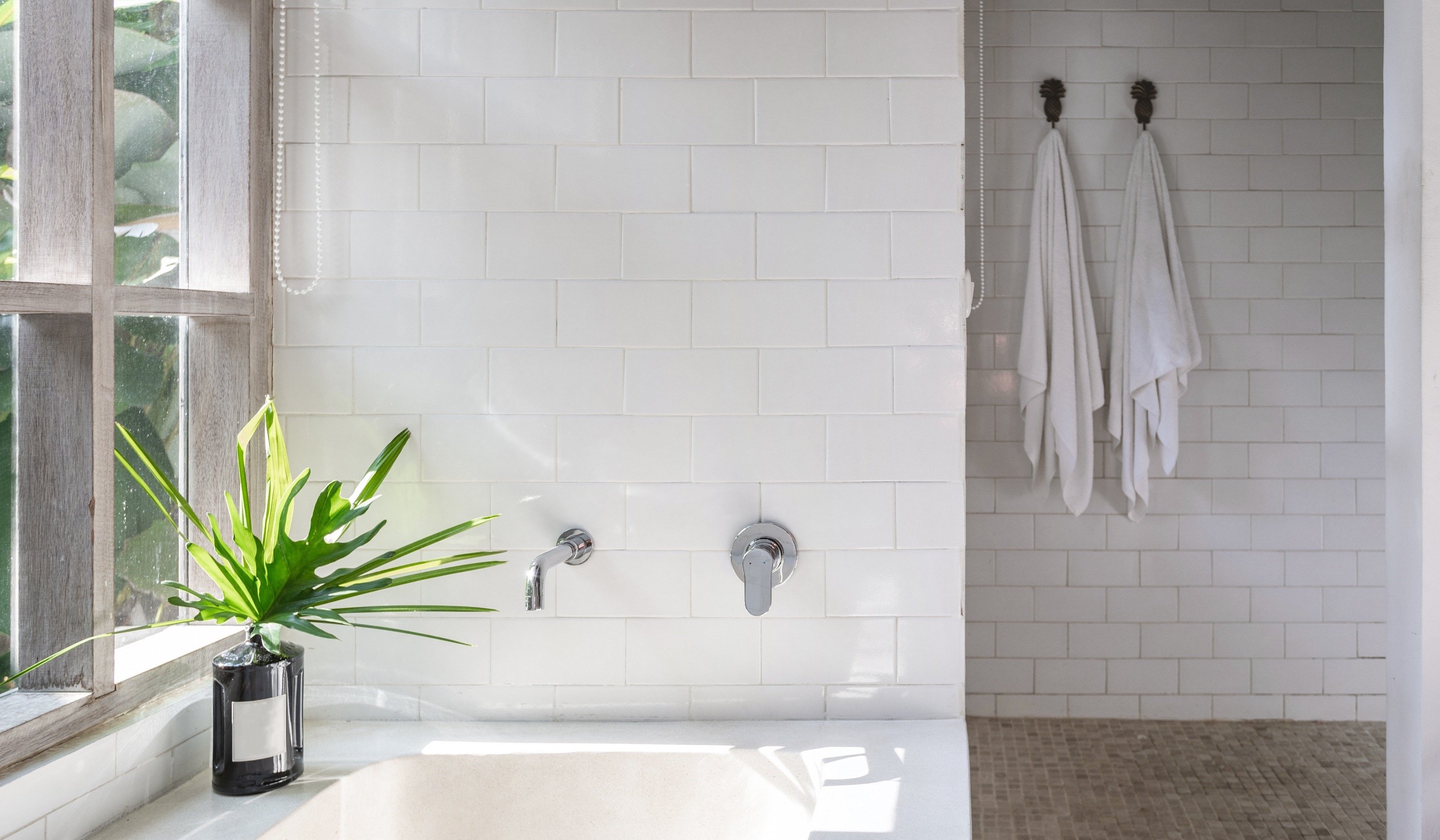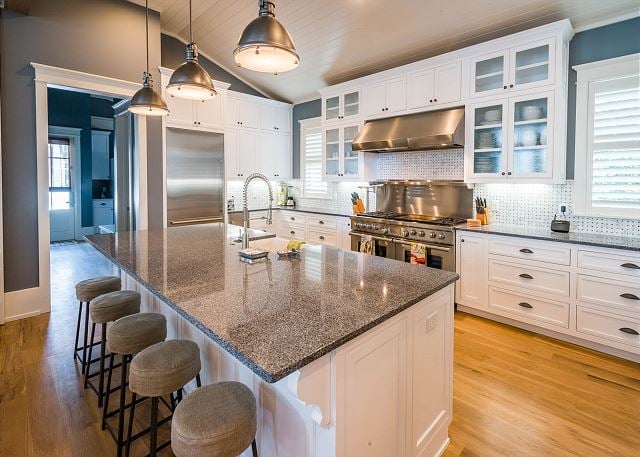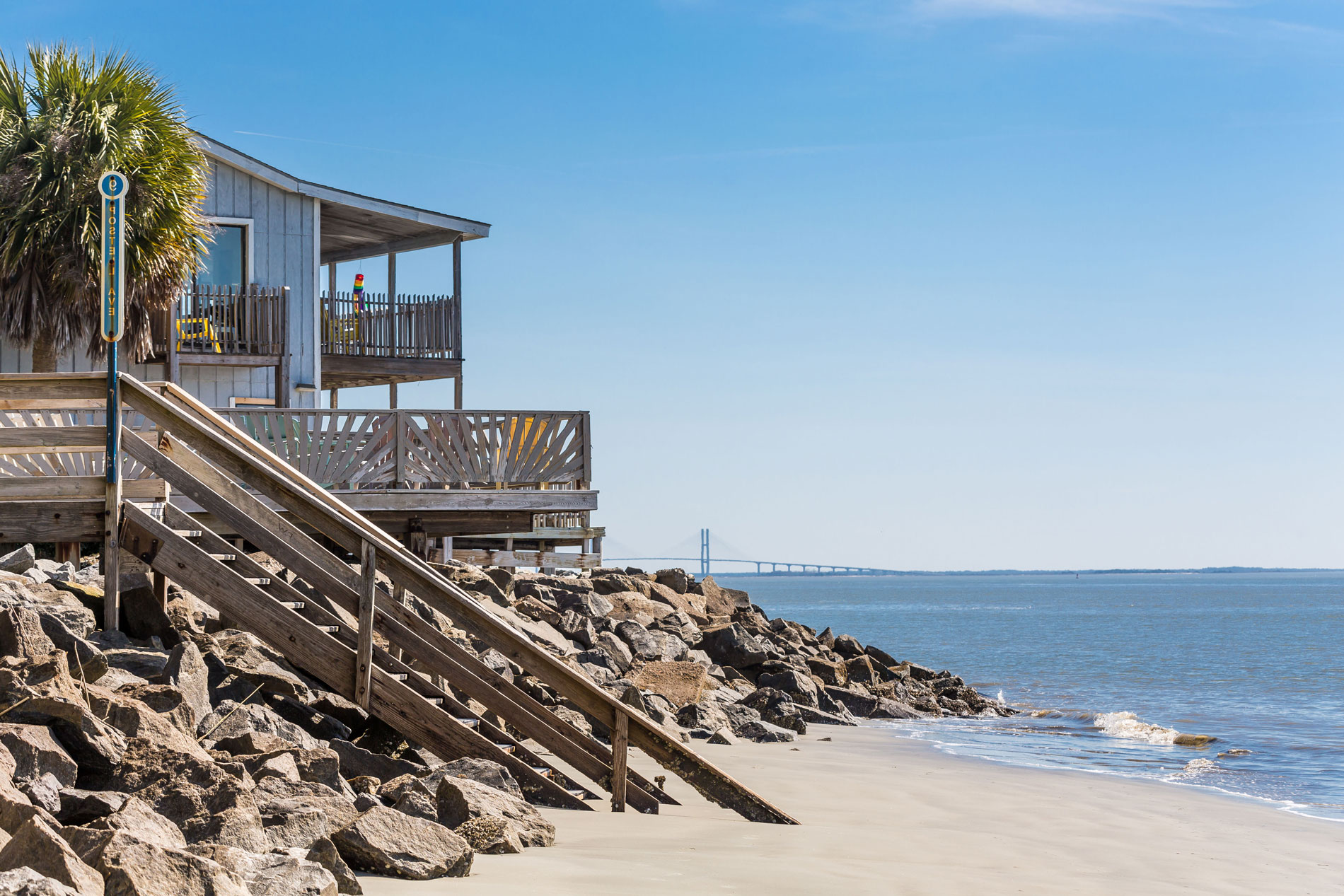
- ...
- Blog
- The Ultimate Guide to Boosting Your Mid-Term Rental Leads

Mid-term rentals can help bring stability, predictability, and profitability to your business performance by diversifying your real estate investments with different types of rentals. But moving to longer-term stays raises important questions for your vacation rental business, like where to list, how to set rates, how to remain compliant with local regulations, and how to adapt your properties.
In this article, we discuss the following areas so you can better understand how to best transition into a new rental market and maximize your mid-term rental leads:
- The definition of ‘mid-term rentals’
- The benefits of mid-term rentals to a short-term rental management business
- Key considerations when targeting mid-term stays
- 7 strategies to increase your mid-term rental leads
|
Automate manual tasks and manage operations efficiently |
What’s considered a mid-term rental?
Though the term ‘short-term rentals’ (STRs) is generally used to describe any stay that’s shorter than a long-term lease (which is for more than six months), ‘mid-term rental’ refers to temporary stays of one to six months.
 This studio with office is available to rent on Anyplace for a minimum of one month.
This studio with office is available to rent on Anyplace for a minimum of one month.
What guest types do mid-term rentals cater to?
Aside from individuals looking for extended vacations, people booking medium-term rentals are often:
- Digital nomads: People who work remotely online and use that flexibility to blend work and travel.
- Contract workers or business travelers: Individuals who take up a position in a new city or location for a temporary period in need of corporate housing.
- People in transitional phases: This could include someone relocating for a job, undergoing a home renovation, or in between permanent housing.
- University or college students: Renters that need accommodation for one or two semesters.
You can find examples of properties for mid-term rentals (MTRs) on major online travel agencies (OTAs) here:
- Vrbo’s monthly vacation rentals page
- Airbnb’s monthly rentals page
- Booking.com’s extended stays page
Benefits of targeting mid-term rentals
Here are some of the arguments for gearing your rental strategy and marketing efforts toward mid-term stays:
- Greater revenue stability: Longer stays mean fewer sporadic vacancies with fewer isolated gaps in your booking calendar, increasing occupancy rates. With tenant screening, a rental agreement, and a security deposit upfront, your rental income is more predictable.
- Easier operations: With month-to-month rentals or year-long leases you can reduce the number of turnovers needed compared to those of short-term housing. Instead, you can switch to a more consistent cleaning schedule that’s not centered around check-in and check-out workflows.
- Less guest messaging: Once settled, mid-term renters have less need to message you about common issues like, for example, parking, property access, or how certain appliances work.
- Greater customer loyalty: Having stayed with you for an extended period, satisfied guests are more likely to bring you repeat business and referrals.
- Better neighbor relationships: Neighbors can feel uneasy about the constant flow of short-term renters, but by booking in guests for a month or more at a time, they can experience fewer disturbances with long-term tenants.
- Lower risk of troubled stays: Short-term renters could be more likely to throw an unauthorized party at one of your properties, whereas guest types like digital nomads and contract workers are generally looking for quiet stays.
|
Pro tip: |
Disadvantages of targeting mid-term stays
Longer stays make it more difficult for you to take advantage of seasonal fluctuations and increased demand events. For example, a mid-term stay could occupy your rental property for the whole of a peak season. Nevertheless, in most cases, mid-term renters expect the daily rate to be lower than a comparable STR stay.
Equally, some local events—like conferences, concerts, or sports occasions—allow property managers and Airbnb hosts to increase prices for a short period. But you might not be able to take advantage of that spike in demand if you’ve rented the property for several months.
Key considerations when targeting mid-term stays
Here are three issues you should be aware of before you start ramping up your mid-term stay strategy.
Compliance with local STR laws and regulations
As a real estate investor, if you haven’t already done so, you may need to familiarize yourself with the local laws governing your rentals, including zonal ordinances, parking restrictions and permits, and licensing requirements. For example, many local councils limit stays in their jurisdiction to a maximum of 30 days.
Mid-term rental lease agreement
The legal rights of your MTR tenants can change due to the length of stay. In this case, long-term rentals need a more detailed lease agreement or rental agreement that’s specific to the property and jurisdiction so you can protect all parties and minimize the risk of a dispute further down the line.
For example, you could include information on maintenance responsibilities—such as a clause requiring tenants to promptly report any damage or issues that need repair so you can address them quickly—and the terms of a break-out clause, so guests have the flexibility to end their stay early as long as they provide you with sufficient notice.
Maintenance and responsiveness
Because mid-stay rental guests are using your amenities and appliances day in and day out for months at a time, your properties and their contents can experience more general wear and tear than with short-term guests. So, it pays to create a specialized set of cleaning and maintenance tasks for longer stays.
For example, you can use Breezeway to customize digital cleaning checklists to include basic maintenance checks—like inspecting heating, ventilation, and air conditioning systems, or replacing the batteries of smoke and carbon monoxide detectors. This ensures your units remain in good condition throughout a mid-term stay, allowing you to pick up on any issues before they develop into more serious problems.
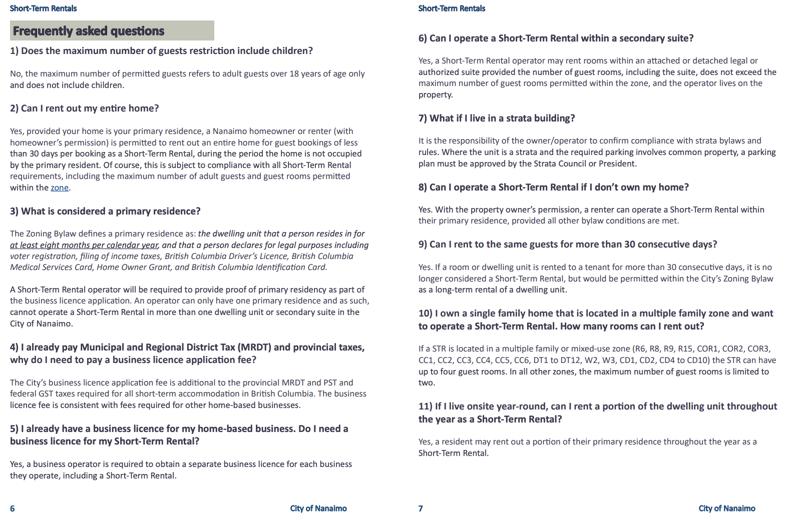 The City of Nanaimo’s short-term rental guidelines include an explanation of what rental period is considered an STR.
The City of Nanaimo’s short-term rental guidelines include an explanation of what rental period is considered an STR.
7 strategies to get more vacation mid-term rental leads
Now onto the tips for increasing your number of MTR guests. We include ideas specific to different guest types, where you need to concentrate your marketing efforts, tools you can use to operate mid-term rental properties more efficiently, and platforms where you can list.
1. Tailor your amenities for the needs of typical mid-term guests
The most important step you can take to increase mid-term rental leads is providing for your target guest’s needs. Here are some ideas on what different guest types look for in a mid-term stay:
Digital nomads
- Stable WiFi connection with fast download and upload time
- A well-equipped kitchen with a high-quality coffee maker
- A peaceful environment including a designated office space with natural light
- Pet-friendly extras, such as a washing station, beds, bowls, and blankets
- A community of similarly-minded remote workers
Contract workers or business travelers
- Excellent internet service. Note that some companies request an ethernet connection so remote workers can run uninterrupted calls, meetings, and presentations.
- Tech-enabled kitchen facilities, like a smart coffee machine
- Good parking and transport links
People in transitional phases
- Comfortable living spaces with smart entertainment systems, streaming services, and temperature control
- Child-proofed amenities
- Pet-friendly extras, as with digital nomads
- Available space for their own belongings, like attic space or a basement
- Good parking
University or college students
- Good transport links and/or central location
- Easy access to local student communities
- Competitive pricing
2. Optimize listings and highlight their suitability for mid-term stays
Make sure your listings stand out to your audience—essentially, don’t bury the lede. So, through written descriptions and photography, feature the most attractive and relevant features of your property.
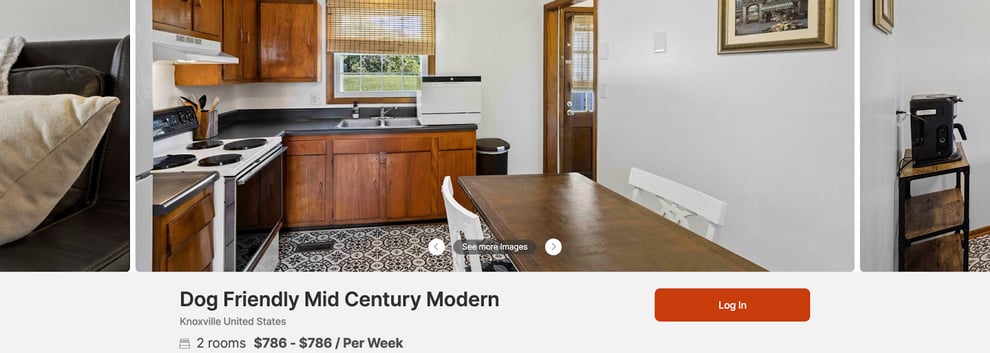 Use your listing title to highlight a key feature of your property, like this Nomad Stays listing
Use your listing title to highlight a key feature of your property, like this Nomad Stays listing
Be sure to include imagery of amenities such as a naturally lit home office, spacious living area, pet-washing station, fully equipped kitchen, smart coffee maker, or attic space. Also, use imagery as evidence of the high-speed internet service, and provide details on transportation to city hubs or popular locations.
You could also add information about local communities and services or public spaces that might attract your target audience, like coworking spaces, yoga centers, child care services, parks, and walking trails.
Also, consider activating features like Airbnb Instant Book so you can accept last-minute reservations, since many digital nomads make spontaneous decisions on their next temporary home.
3. List on specialized mid-term rental platforms
As well as the major OTAs, like Airbnb, Booking.com, Expedia, and Vrbo, look to lists on niche platforms geared towards medium-term stays, extended stays, and digital nomads.
Here are a few examples of booking sites you could consider:
- Landing features high-quality furnished apartments in multiple locations across the US for mid-term and long-term rentals.
- Anyplace is designed for remote workers with listings that feature details of the home office setup.
- Nomad Stays showcases work-ready accommodations in beautiful locations across the world and has over 9000 members.
- Furnished Finder is a subscription-based platform that specializes in providing travel nurses and other traveling professionals with mid-term furnished rentals.
4. Create a direct booking site and strategy
One of the most appealing aspects of developing a mid-term housing strategy is the potential for increased loyalty and repeat guests. To make sure you’re making it easy for old guests to stay with you again, have your own direct booking site and direct booking strategy.
Here are some key considerations:
- User-friendly design: Ensure your direct booking site is easy to navigate, professional-looking, and mobile-responsive. Make it as easy as possible for guests to book—so a minimal number of steps should be required to complete a reservation.
- Synchronize your listings and booking calendars: If you’re listing across multiple OTAs, you need to avoid double bookings and always feature the latest, most accurate availability. You can do this with a channel manager and booking widget.
- Automate cleaning schedules: As you further diversify channel distribution, you increase the risk of missing a clean or confusing schedules across your regular housekeepers. With automated task generation and assignment, you’ll save hours of management time and can virtually eradicate human error.
- Loyalty programs and referral incentives: These could include discounts, early check-in/late check-out options, or special amenities for returning guests.
5. Network with local businesses
There may be organizations or colleges that are looking to provide reliable and comfortable living arrangements for their employees or students.
So, research and identify local businesses, corporations, hospitals, universities, and other organizations that frequently require temporary housing for their people. Then, if you find an opportunity, you can consider offering special packages to make your properties more attractive to them.
As well as your pricing, look to highlight the practical features of your properties, like safety, comfort, accessibility, and regular cleaning and maintenance.
6. Research local rental market rates and price competitively
Accurately pricing your properties for mid-term stays can be challenging since most properties are priced for either long-term or short-term stays. As a result, there may be less competitive rental market information in your local area to compare your pricing against.
So, when conducting your research, look for properties that offer mid-term stays in comparable areas, with similar amenities and services.
As you analyze the pricing of similar properties, consider how they adjust pricing for not only length of stay but also lead time—for example, most properties offer discounted rates for bookings that are made several months in advance of the stay, otherwise known as early bird pricing.
Also, you can turn to revenue management and dynamic pricing tools for help, like Beyond Pricing, PriceLabs, and Wheelhouse. Or check out AirDNA, which gathers data on Airbnb and Vrbo listings for market analysis.
7. Create an exceptional guest experience
As with short-term rentals, an outstanding guest experience should represent the cornerstone of your mid-term rental service and be at the forefront of your marketing efforts.
Here are some ideas on how to exceed the expectations of your guests and win five-star reviews, referrals, and repeat business.
Share a digital guide with details and insights
Provide guests with all the information they need to enjoy a stress-free start to their stay with a vacation rental welcome book. Include arrival information, details about the property and its amenities, and suggestions on how to get the most out of their stay.
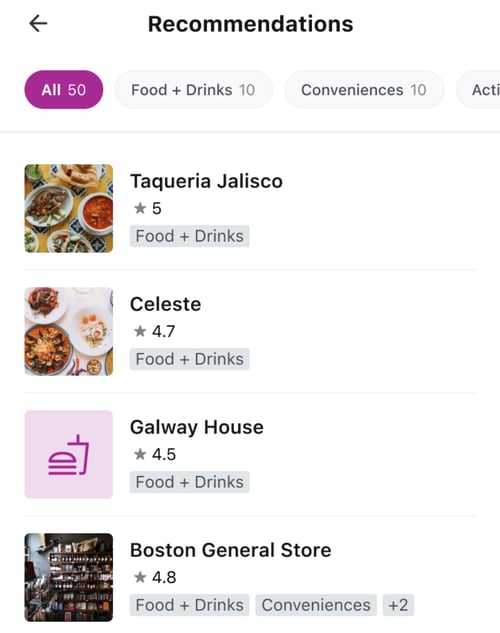 Breezeway’s digital guide helps you add value to the guest experience.
Breezeway’s digital guide helps you add value to the guest experience.
Gift guests a personalized welcome basket
A welcome basket can be creatively presented with freshly baked bread, local wine, and other treats, or it can be filled with practical foodstuffs, toiletries, and branded merch. Whatever you choose to include, consider your guest’s needs and preferences—for example, depending on your guest, you could include vegan spreads, sand buckets, chocolate snacks, local cheeses, or coffee pods.
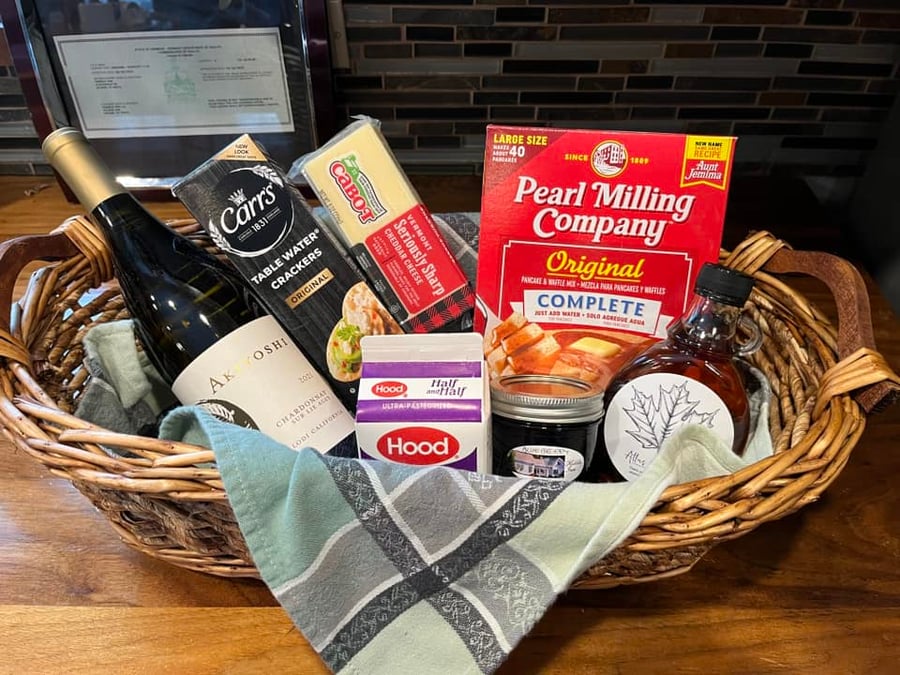 Personalized baskets create a warm welcome for guests and a fantastic first impression.
Personalized baskets create a warm welcome for guests and a fantastic first impression.
Be responsive and proactive
While your guests will mostly want a quiet, hassle-free experience, they expect you to be accessible, approachable, and responsive to their needs. You can make sure you don’t miss a message by integrating your team and guest messaging solutions.
For example, you can use Breezeway to create maintenance jobs directly from guest messages. So, if you receive a message from a guest about a leaky tap, you can assign a new work order without switching tabs, apps, or platforms. Then, in the same dashboard, you can monitor the status of the task and see as soon as the problem has been addressed.
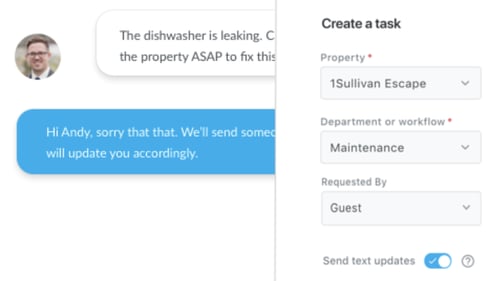 Breezeway’s guest and team messaging is fully integrated.
Breezeway’s guest and team messaging is fully integrated.
More predictable cash flow & streamlined management operations
Mid-term rentals can bring you more consistent revenue that’s less vulnerable to seasonal fluctuations, ease your relationships with neighbors and the local community, and release your operations from being so closely tied to your booking calendar.
To maximize your MTR leads, you need to understand the preferences of your target audience, then tailor and market your amenities accordingly. You should look into listing on niche OTAs, connect with local businesses and institutions that need accommodation for their employees, and research the market so you can set your rates competitively.
You also need to provide a memorable guest experience. You can exceed guest expectations and optimize operations management with Breezeway, which streamlines guest messaging, automates cleaning schedules to accept last-minute bookings, and lets you customize digital cleaning checklists within a user-friendly, all-in-one dashboard.
|
Automate manual tasks and manage operations efficiently |
See how Breezeway can boost your mid-term rental leads
Streamline operations for short-term rentals and multifamily residential units with Breezeway's automated work coordination and guest experience tools to ensure guests and tenant satisfaction.
More from the Blog
Visit the blog
